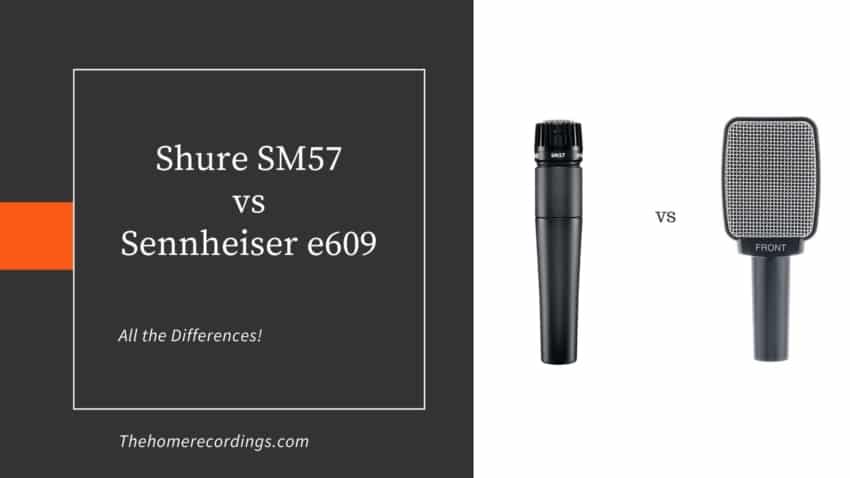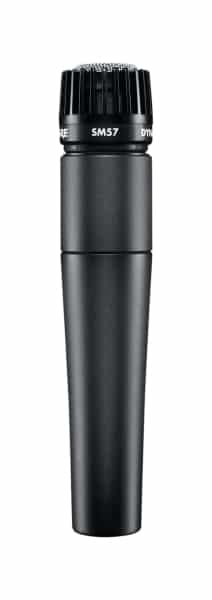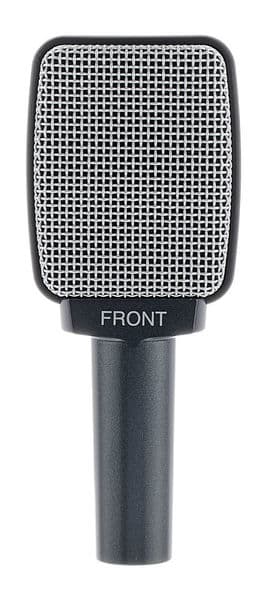Last updated on December 29th, 2023 at 09:58 pm
There is no denying that over the past couple of decades the standard microphone used to record guitar cabinets-, drums-, and other instruments with, has always been the Shure SM57, but since the release of Sennheiser’s e609, people have slowly been gravitating more towards it.
So, in this article I’ll go over the differences between the two, if there’s one that should suit your need better than the other, and I’ll also do a quick overview of both of them.
So, without further ado, let’s get started!
Differences between the Shure SM57 and the Sennheiser e609
The Shure SM57 has a Frequency response of 40Hz-15kHz and features a cardioid polar pattern while the Sennheiser e609 features a supercardioid polar pattern and a frequency response of 40Hz-18kHz.
Both have a similar sound quality, but when recording distorted electric guitar, the Sennheiser e609 sounds clearer in the mid- and high frequencies.
There is one more difference which is that the e609 has a much lower profile, meaning that it doesn’t take up as much space in front of the amp and is much less likely to get bumped.
Now, let’s take an in-depth look into both microphones and then I will give you my opinion on which one to get.
Shure SM57
Used to record guitar and bass cabinets, drums -especially snares-, and loads of other instruments all over the world, the SM57 is considered to be the best dynamic microphone for recording instruments and has always been the go-to in the music industry.
The reason the SM57 is used for recording instruments is because of the grille:
The SM57 has a built-in grille that’s actually part of the cartridge, which means that the diaphragm of the microphone can be placed a bit closer to the sound source, whereas on other dynamic microphones that have a ball grille that also works as a regular pop filter, you can’t get it as close.
The closer the sound source, the more pronounced the proximity effect will be. So, you could say that the SM57 has a more pronounced proximity effect than most other dynamic microphones.
Additionally, the SM57 has a cardioid pickup pattern, meaning that it will mostly pick up sound coming from the front while rejecting anything from the sides or back.
First, let’s talk about the build quality:
The SM57 is built like an absolute tank; it can literally withstand anything you throw at it like being dropped on the ground, bumps, spills, and much more.
The reason for this is that it needs to be able to survive live shows and the life on the road, so it was designed to do just that.
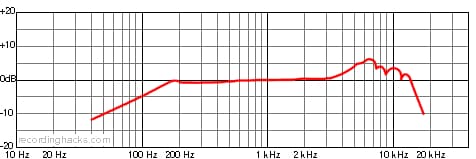
The SM57 has an increased presence peak, which would be in the higher mids/high frequencies.
This means that vocals, for example, will cut better through the mix, and so will electric guitars.
How does it perform?
I use the SM57 to record almost anything, and it really is a very versatile microphone since it can be used on vocals, with a good pop filter in front of it otherwise the plosives will be too much, on electric guitar cabinets, to record drums, and it’s designed to be used both in the studio and on stage.
I love recording my electric guitar with it since the sound is clear, warm and also has a nice low-end, and when recording clean tones, I don’t hear any particular frequencies being too prominent.
As far as high-gain tones go, it doesn’t sound muddy at all but it definitely picks up quite a lot of the lower/low mid frequencies, which is something that doesn’t happen with the Sennheiser e609, and the mids and highs do sound a bit “muffled”, for lack of a better term; they don’t sound as clear, at least not to me.
Features
- Most Popular dynamic mic in the world
- Great at recording almost any instrument
- Excellent for close-miking
- Perfect for studio and live shows
Specifications
| Polar Pattern | Cardioid |
| Microphone type | Dynamic |
| Frequency Response | 40 to 15,000 Hz |
| Output Impedance | Rated impedance is 150 Ohms (300 Ohms actual) |
| Connector | Three-pin (XLR), male |
| Sensitivity | -56dB |
Find out more about the Shure SM57 here:
- Shure SM57: Amazon, Sweetwater.
Sennheiser e609
The first thing you need to know is that the Sennheiser e609 has a supercardioid polar pattern, which simply means that is has a more narrow pickup angle on the front and rejects even more sound coming from the sides.
The only issue with the supercardioid pattern is that it is quite sensitive to sounds that are directly behind it.
This microphone was also designed to be used to record guitar cabinets since you can directly hang it on the front of the amp using the mic cable and it will be facing directly towards the speaker, which is something that doesn’t work as well with the SM57.
In other words, you don’t necessarily need a mic stand with the e609, even though I’d actually recommend using one to get a better mic placement.
Now, as far as the build quality goes, it’s not on par with the SM57, which is a shame; It’s got a metal grille and body, but the font- and back grilles are joined by a piece of plastic, and considering that this mic will be used in live settings where it can get knocked around, I don’t know how long it will last.
Don’t get me wrong, it’s definitely well built, just not as well as the SM57.
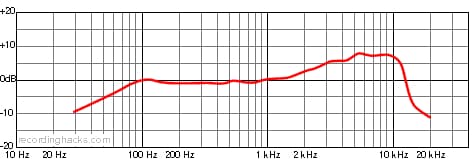
Similar to the SM57, it’s got a boost between 2kHz and roughly 12kHz, which definitely helps with getting the guitar to cut through the mix more easily.
How does it perform?
So, even though I tried recording vocals with it just to give it a try, I definitely didn’t expect much since it was strictly designed for recording guitar cabinets, and it did sound a bit to bright and sibilant to me.
However, when recording electric guitar cabinets, I have to say I was pleasantly surprised;
The low-end sounds extremely tight without being muddy and in the mids and highs everything just sounds very defined, especially when adding distortion to it, since this is something that I didn’t like as much about the SM57 because it sounded a bit less defined.
The clean tones didn’t differ that much from the SM57, but once I added gain, I have to say that I liked the e609 more because of the clarity.
What comes in the box?
- The Sennheiser e609 Microphone
- Microphone Clip
- Carrying Pouch
Features
- Instrument-specific microphone
- Supercardioid polar pattern
- Good build quality
Specification
| Polar Pattern | Supercardioid |
| Microphone type | Dynamic |
| Frequency Response | 40 to 18,000 Hz |
| Output Impedance | Nominal Impedance 350 Ohms |
| Connector | Three-pin (XLR), male |
| Sensitivity | 1.5mV/Pa |
Find out more about the Sennheiser e609 here:
Sennheiser e609: Amazon, Sweetwater.
Which one should you get?
Now, I would generally recommend that you get both since, even though they might sound different, they both sound great.
However, if I had to pick just one, I would have to go with the SM57 simply because it’s slightly more versatile; It’s fantastic for recording vocals, while the e609 doesn’t do that great of a job at it.
Now, if you ask me which one I would get to record GUITAR CABINETS, then I’d have to say the Sennheiser e609, mainly because it already sounds in a way that will sit better in most mixes, and this also applies to live shows as well.
So, Sennheiser e609 for recording electric guitar and Shure SM57 for more versatility.
Conclusion
To be honest, I had always been a huge fan of the Shure SM57, but I think some of it was due to everyone saying how great it was and I simply went with it.
It is an absolutely fantastic microphone, don’t get me wrong, and in some cases I would take it over the Sennheiser e609, but for recording guitar cabinets, the Sennheiser just sounds better to my ears.
I hope this information was useful!
Have a wonderful day!
